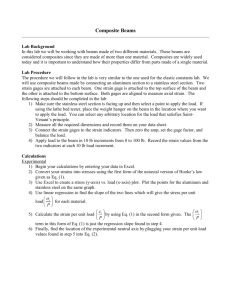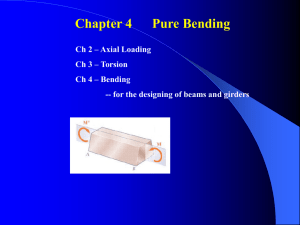Measurement with mechanical devices
advertisement
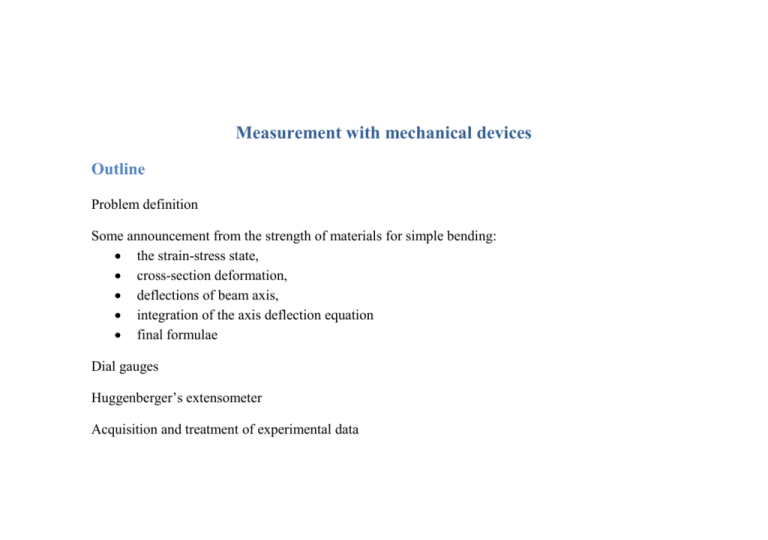
Measurement with mechanical devices Outline Problem definition Some announcement from the strength of materials for simple bending: the strain-stress state, cross-section deformation, deflections of beam axis, integration of the axis deflection equation final formulae Dial gauges Huggenberger’s extensometer Acquisition and treatment of experimental data Problem definition Let’s consider the following problem: Using mechanical devices determine the Young modulus of the material that the beam has made of. Resolving statics we obtain constant value of bending moment in the span of the beam. This is the case of simple bending. Simple bending – recap Definition of the case of pure bending Prismatic bar with the cross-section one axis of symmetry is loaded by surface continuous load, linearly changing with z axis. The bar is fixed at the point 0(0,0,0). q=-kz z O q=kz y x n Kinematic boundary conditions are at the point 0(0,0,0): u i (0,0,0) 0, u i , j (0,0,0) 0 . From the static boundary conditions we predict the state of stress in the form: kz 0 0 T 0 0 0 0 0 0 From Hooke’s law we find: kEz T 0 0 kEz 0 0 0 . kEz We check that the compatibility conditions are fulfilled. So, all that’s left for us to do is to find the solution of geometrical Cauchy’s equations: ux kEz , uy vx 0, v kz u w y E , z x 0, : w kz v w z E , z y 0. The general solution of a set of inhomogeneous equations is the sum of the complementary function (the general solution of a set of homogeneous equations) and a particular integral. The homogeneous set of equation means that all strains are zero. This is the case of perfectly rigid body; it has 6 degrees of freedom: 3 translations and 3 rotations. The equations of movement can take the form: u 0 a z y, z, w v 0 b z x, y, v 0 w c x y. x, u (the superscript “0” means general solution) It is easily to predict the form of the particular integral: us kz x, E v s kz y, E ws k x 2 y 2 z 2 . 2E Combining the solutions and checking kinematic boundary conditions we obtain the final solution in the form: u kz x, E v kz y, E w k x 2 y 2 z 2 . 2E The most interesting is the third term; for the beam axis (y = 0, z = 0) we have: w kx 2 . 2E Making use of mathematical definition of the curvature we have: w' ' ( x) 1 ( x) 1 w' 2 ( x) 3 2 and because of the general assumption of small derivatives of displacements: w' ' ( x) k E The solution of pure bending is also valid in the case of simple bending, that is for M y kz2dF k J y , so for k M y J y . F The final formula is: EJ y w' ' ( x) M ( x) In order to get the line of the beam axis we have to solve the equation. For the beam span we have the kinematic conditions: w(0) = 0, w(l) = 0, and the formula for bending moment is quite simple: M(x) = P a. Integrating twice we get: w( x) Pa 2 x Cx D . EJ y From boundary conditions we have: D = 0, C w( x) Pa l and finally: EJ y Pa 2 ( x lx) . EJ y So, we know the strain of extreme (upper, for instance) fibers and the deflection of particular point of beam axis. Final formulae The strain of upper fibers is: M Pa E EW y EW y where the factor of rectangular cross-section Wy is: Wy bh 2 . 6 The Young’s modulus expressed in the term of strain is then: E 6 a P bh 2 The Young’s modulus expressed in the terms of deflections in particular section x = c is: E ac(c l ) P 12 ac(l c) P . Jy w bh 3 w Measurements The strain of extreme fibers can be measured with the Huggenberger’s extensometer. Its normal base of measurement is l0 = 20 mm and can be increased up to 100 mm. Its leverage (enlargement) is 1:1000. Scheme of Huggenberger’s extensometer So, we calculate for reading r in [mm]: r r r . l 0 1000 20 20000 The deflection can be measured by means of digital gauges. Its resolution is 0.01 mm and transmission ratio is 1:100. Dial gauge and dial gauge scheme Data handling Calculations for the dial gauges measurement: recording the dial gauge reading calculation of deflections (reading differences) mean value of deflection standard deviation of deflection standard deviation of Young modulus confidence interval final result Calculations for the strain measurement: recording the readings calculation of strain differences mean value of strain standard deviation of strain standard deviation of Young modulus the confidence interval final result

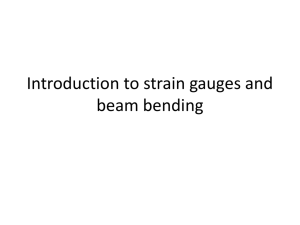
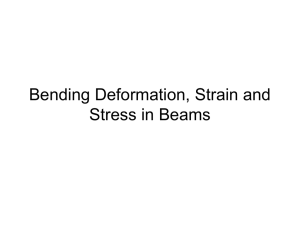
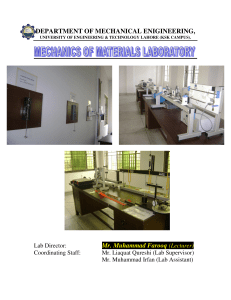
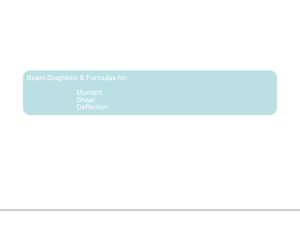


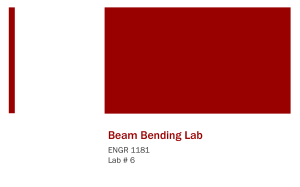
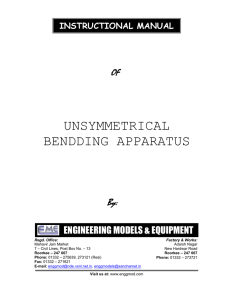

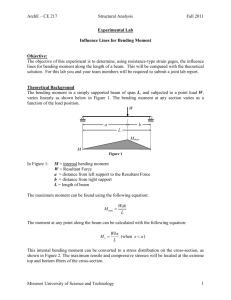

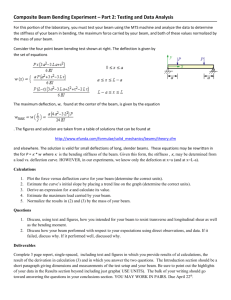
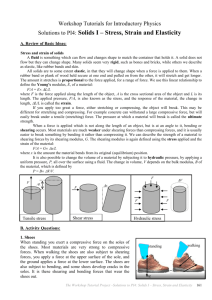
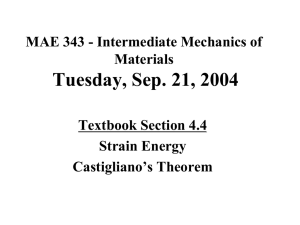

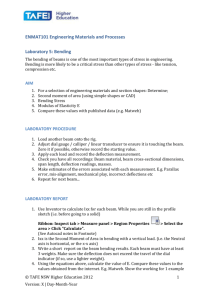
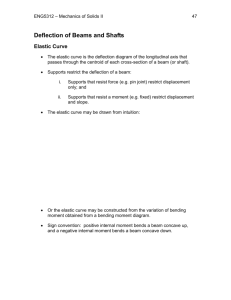
![AGE 409 [Introduction to Agricultural Structure Designs]](http://s3.studylib.net/store/data/009258171_1-e60f4529a6e23f6bb03e503136636db1-300x300.png)
